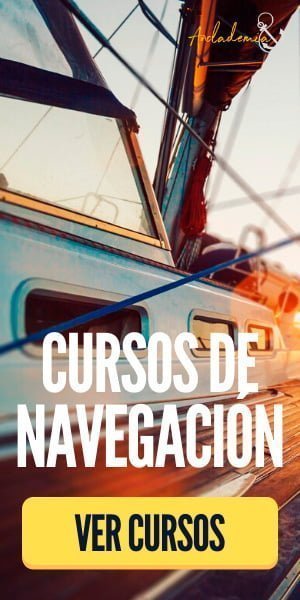The cards are the maps used for navigation and in them the entire earth's surface is represented with details that can be useful to the navigator, such as the outline of the coast, lighthouses, reefs, probes, type of bottom, declinations, currents, etc. exist two types of cards for navigation, gnomonic (for orthodromic defeats) and the mercatorian (for rhumb line defeats).
The Earth's surface is spherical, which makes it difficult to develop in a plane. The Mercatorian projection (in honor of Mercado, who developed it) is based on a cylinder, where the meridians remain as parallel lines and at equal distances and the parallel lines also remain as straight lines, but whose distance increases at the same time as they move away from the Equator.
What types of navigation charts exist?
In function of the area extension that is going to be represented, we can find different types of cards. The main ones are:
- Coastal navigation charts: They are those used to navigate recognizing the coast.
- Approaches or landfalls: Sometimes it is necessary to make it easier for sailors to approach ports or even certain important geographical features.
- Portulanos: show with many details a small extension of coast or sea (ports, inlets, coastal projections, anchorages...)
- Cartridges: sometimes, within the same chart, a larger-scale part is inserted (port, bay cove...). Usually these are minor accidents, which do not deserve a separate portulano.
What information do the cards provide?
The importance of the letters lies precisely in the geographic information that they offer to the boat, helping in navigation and avoiding mishaps.
- Accidents on the coast: such as cliffs, beaches, sandbanks...
- Terrain accidents: They are those accidents that can help in navigation, such as summits, mountains, hills...
- Points of reference: many are those that are normally reflected in order to aid navigation. In addition to those already mentioned, we can highlight buildings such as chimneys, towers, bell towers, ports, anchorages, breakwaters...
- Lights: the most characteristic are those of the headlights, indicating their cadence to be able to identify them.
- Buoys and beacons: luminous, homing, fixed, floating...
- Dangers: such as shallows, whirlpool reefs, dunes, isolated probes due to danger...
- Prohibited areas: for example, anchoring and trawling.

Most important signs and abbreviations used in nautical charts
In the Special Publication No. 14, edited by the IHM, the symbols, abbreviations and terms used in nautical charts are periodically published. Below we list some of the most important ones.
Headlights
Are powerful lights located in strategic places, like port entrances. They are usually tall, cylindrical buildings that serve to help navigation both during the day, due to their recognition, and at night, due to their powerful light.
In the letters, although not in as much detail as in the Lighthouse Books, their characteristics are specified. For example, the Trafalgar Lighthouse indicates FI (2+1) 15s as one of its characteristics. 22 M, which means that it gives two flashes plus one every 10 seconds and that its visibility is 22 miles. If a figure appeared with the “m” it would be the meters high of said lighthouse.
Are you interested in: Waterways and floods What are they and how to act?
Probes and probes
It's two o'clock metrics expressing bathymetry, that is, the measurement of the depth of the water and the configuration of the seabed. The probe refers to the depth expressed in meters and referring to the heeled low tide.
For their part, the veriles, or isobatic lines, are the connection lines with probes or depths of equal measure.
Magnetic declination
This is how the legend located on the compass rose is known, which informs of the magnetic declination of the year of publication, as well as the decrease or increase annually for correction in subsequent years.
Background nature
Indicates the circumstances and characteristics of the nature of the fund in short:
- A – Sand
- F – Mud
- L – Mud
- Arc – Clay
- Co – Cascajo
- Ca – Conchuela
- Go – Pebble
- P – Stone
- R – Rock
- Ro – Rocky
- Alg – Algae
- Mad – Madreporas
- Cl – Coral
- E – Sponges
- Lav – Lava
- Vc – Volcanic




